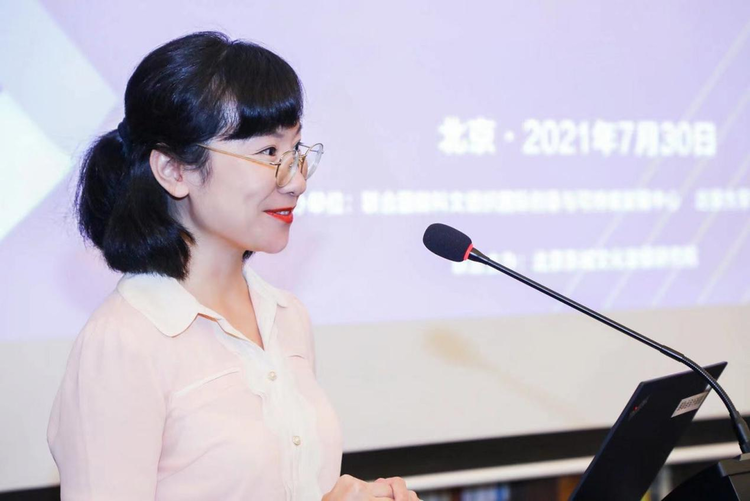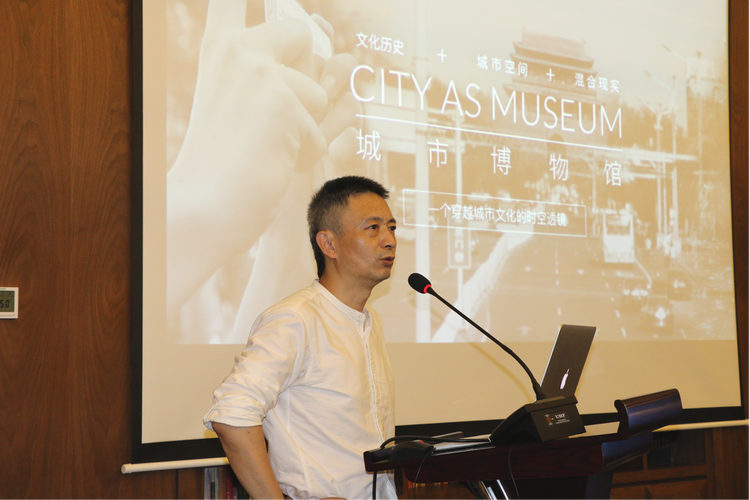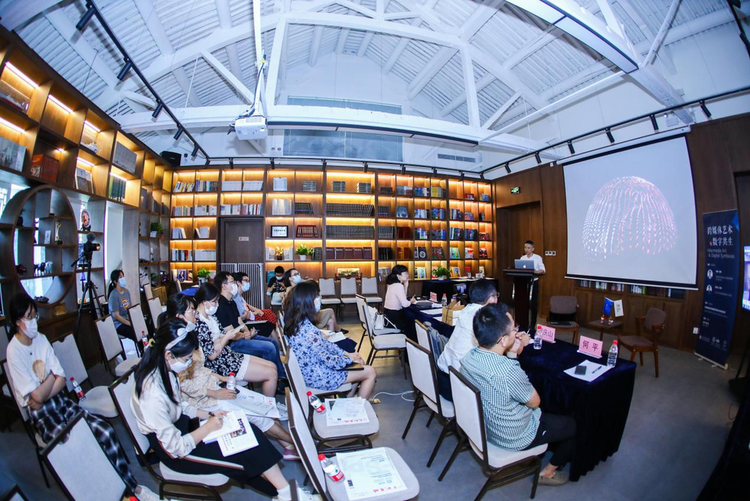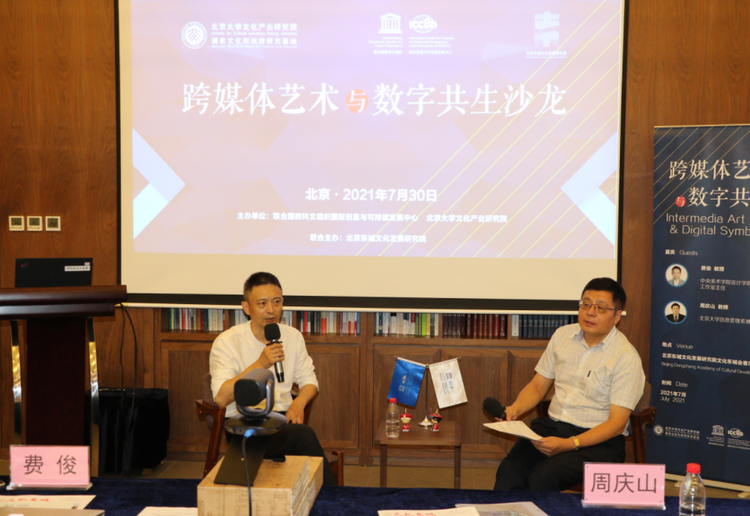On July 30, the "Creativity 2030" Salon jointly sponsored by ICCSD, the Cultural Industry Research Institute of Peking University and the Beijing Dongcheng Cultural Development Research Institute was held in Beijing Dongcheng Cultural Development Research Institute. Themed on "Cross-Media Art and Digital Symbiosis" and held in an "online plus offline" way, the salon aims to put eyes on the characteristics of immersive experience and participatory interaction of digital media art to explore the creation and expression of cross media art against the background of intelligent era, in turn providing help for the future development of digital media art.
Fei Jun, Professor of School of Design, Central Academy of Fine Arts (CAFA), was invited to share his comments on the topic. Zhou Qingshan, Professor of Information Management Department of Peking University, was invited to have a dialogue on the theme of "Digital Technology and Activation of Beijing Central Axis".

Wu Wenbin, Director of Public Relations of ICCSD, presides over the event

Fei Jun, Professor of Art and Science and Technology and doctoral supervisor of CAFA, gives a keynote speech
At the event, Professor Fei Jun gave a speech on the theme of "Application of Cross-Media Art: Digital Interpretation of Cultural Heritage". At present, museums and cultural institutions around the world are carrying out digital construction based on cultural heritage. The application of digital technology in cultural heritage is an important innovation power of digital cultural industry. Taking the works of "City Museum" as an example, Professor Fei Jun shared how to excavate the value of cultural heritage in exhibition, communication, education and cultural creation through practical digital interpretation, and deeply dissected the design experience behind the series of classic cases combined with the actual cases of digital Cultural Expo, digital cultural creation and digital cultural tourism, and from the content, experience and product to explain the mode and method of digital interpretation.
Fei Jun pointed out that as the pillar product of the "digital cultural geographic system" project, "Urban Museum" turns the city into a museum without walls by connecting the exclusive cultural memory of each city with the physical space of that city. Through the guide product of "City Museum", users can not only obtain rich media information interpretation such as cultural attractions, intangible cultural heritage culture, former residences of celebrities, historical stories and folklore, but also visit those historical relics that have disappeared, such as city walls, temples and former residences, through the AR scene- rebuilding technology, so as to form a deep cultural experience through time and space.

On-site
Professor Zhou Qingshan and Professor Fei Jun had a dialogue on the topic of "Digital Technology and Activation of Beijing Central Axis". Fei Jun said that the central axis is a typical city-level cultural heritage, which is different from buildings and cultural relics in the traditional sense. City-level cultural heritage can make people feel like stay in the real scene by means of films and other digital methods, so as to achieve a virtual communication and make the cultural heritage truly activated and utilized. Zhou Qingshan said that in the world, digital technology has fully penetrated into all fields. How to upgrade the data collection, classification, sorting, output, feedback and regeneration of cultural heritage with digital technology has become a topic of great concern for cultural practitioners at home and abroad. Digital technology provides diversified channels for the protection, display and dissemination of cultural heritage. Through the combination of technology and cultural heritage, people can revitalize the value of cultural heritage and make it produce positive communication effect and spiritual value. However, excessive interaction or high-tech presentation may weaken people's imagination and the accuracy of content transmission.

Fei Jun (left) and Zhou Qingshan (right)
On the issue of how to use digital means to make cultural heritage "live in the present" under the background of the development of cultural powerhouse, Fei Jun believes that first, cultural heritage activation is not equal to cultural heritage dynamic activation. In today's society, the activation of cultural heritage is inseparable from digitization. The activation of cultural heritage must adhere to the "traditional culture-oriented and digital technology-supported" principle, utilizing digital technology to serve traditional culture, so as to carry forward traditional values. Only in this way can cultural heritage be truly activated. Secondly, we should be in awe of cultural heritage and do not over-entertain it, otherwise it will distort and mislead the mainstream values of society.

Live Q&A session

Group Photo of Participants
The "Creativity 2030" Salon, sponsored by the UNESCO International Center for Creativity and Sustainable Development, is one of a series of activities under the Center's "Creativity 2030" (C2030) Brand. The Center will organize salon activities with no fixed dates. Themes involve creativity, sustainability, science and technology, culture and other fields. One or two experts, scholars and senior practitioners will be invited each time to communicate with the Center's staffs and social partners in the forms of speeches, dialogues and interactive Q & A, etc.